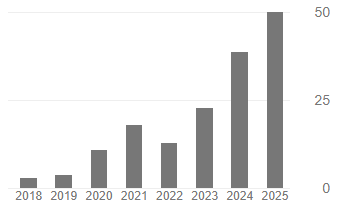Detection of Pathogenic Bacteria in Water Bodies
Keywords:
human health risk, pathogenic bacteria, water environmentAbstract
Water is one of the requirements for the existence of all living organisms. Although water is a critical necessity for life, it also poses a threat to human health and well-being because of its role in transmission and dissemination of infectious diseases. The problem of water pollution caused by the contamination of water sources with bacteria is one of the main factors contributing to the human health risk. The main aims of this paper is to detect the presence of pathogenic E.coli, Salmonella spp. and Shigella spp. in selected water bodies, including river, waterfall, pond and coastal. The highest E.coli, Salmonella spp. and Shigella spp. were detected in a pond in Perak with an average of 7.89x103, 6.096x103 and 3.876x103 CFU/mL, respectively. However, the lowest concentrations of E.coli and Salmonella spp. were detected in a waterfall with mean of 2.5x101 and 1.233x101 CFU/mL, respectively. Surprisingly, no Shigella species was detected in the waterfall. The findings from this study indicated the occurrence of E.coli, Salmonella spp. and Shigella spp. in water environment that may pose a potential human health risk.
Downloads
Published
How to Cite
Issue
Section
License
Copyright (c) 2018 Politeknik & Kolej Komuniti Journal of Engineering and Technology

This work is licensed under a Creative Commons Attribution-NonCommercial-NoDerivatives 4.0 International License.







